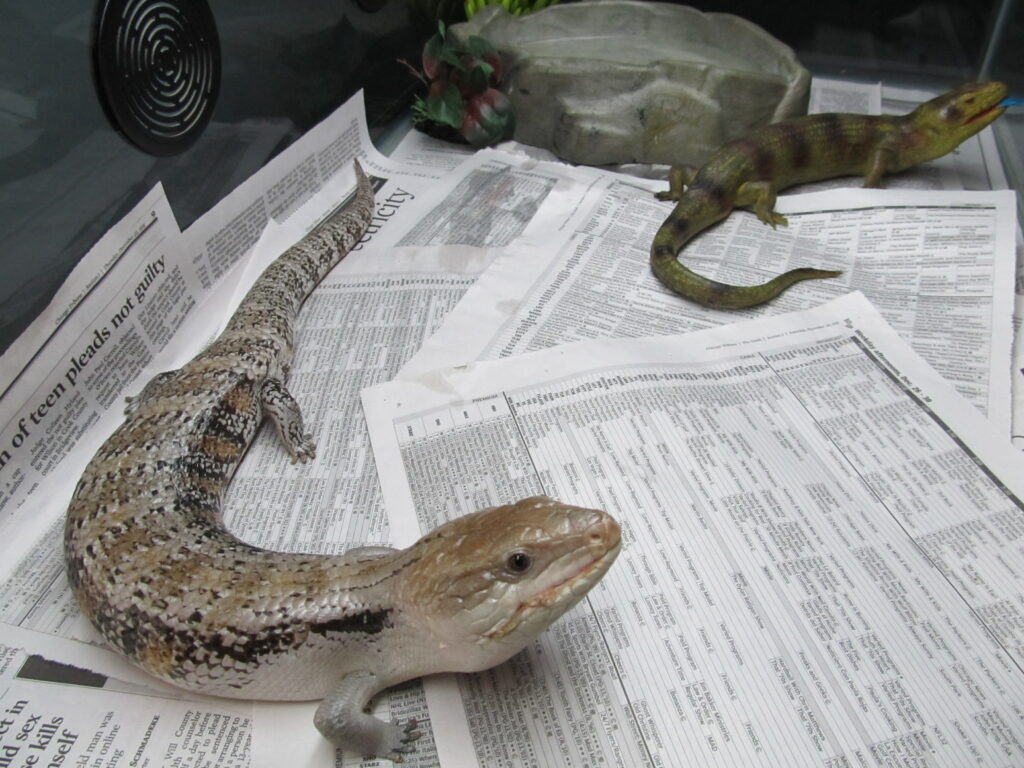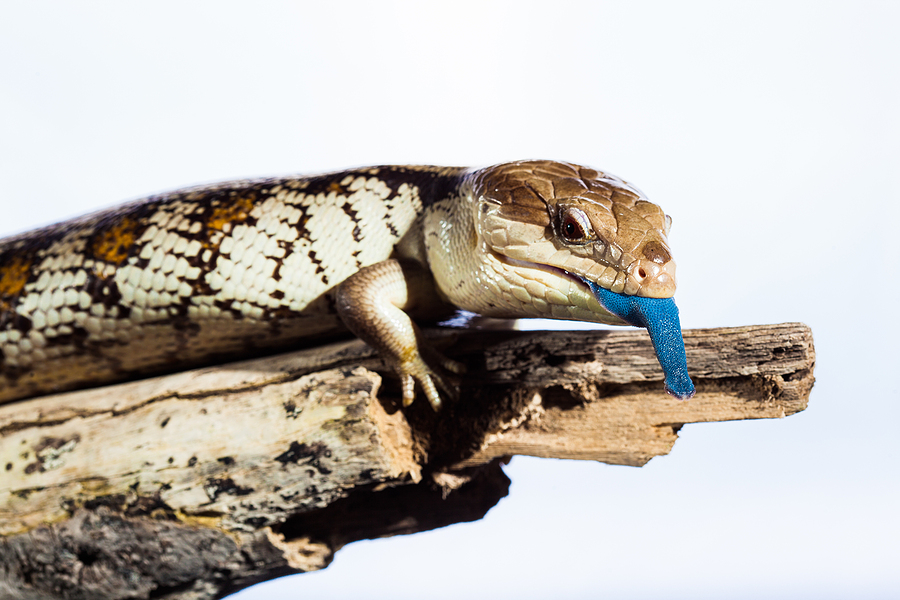“You can only bring her in the house if I can name her, and no crickets allowed.” That is what my wife said 26 years ago when I begged her to allow me to bring home a lizard: a Northern blue-tongue skink.
At the time everyone wanted a green iguana. But those impulsive iguana purchases typically didn’t work out. Within a few years frazzled owners let their reptiles loose outside to ultimately die or, in warm climates, survive long enough to wreak havoc on the environment, or they delivered them to the doorsteps of zoos, which didn’t know what to do with so many. Many of them weren’t fed appropriately or kept in a proper environment and suffered greatly or even died as a result.
Instead of berating people for purchasing iguanas, I wrote a piece about lizards that were easier to care for, and in the process of researching that story I fell in love with Northern blue-tongue skinks. If you want to bring home a lizard, here’s what to know about this species.
The blue-tongue lizards are large enough to impress, reaching up to about two feet as mature adults. And they don’t require crickets or any other live insect (though as an occasional treat is appreciated). Iguanas can certainly be handleable, but they may also be downright dangerous; blue tongues, on the other hand, aren’t large or strong enough to truly be dangerous to humans. And socialized individuals tend to be tolerant of human interaction and at best may actually enjoy it.

Iguanas require climbing space exceeding their 5- to 6-foot head-to-tail length; they pretty much require their own room. A terrarium about 36 inches wide suits a blue-tongue just fine. And they don’t climb, so no vertical space is required.
And I suggest that their blue tongue makes them a whole lot cooler than green iguanas. As with all lizards, the tongue appears when they are exploring their environment, especially when food is introduced. They also protrude their tongue out as far as possible and wave it when they feel threatened (which I hope never happens to pet lizards). Other animals perceive the blue color as signaling danger, but really Northern blue-tongue skinks have few defenses beyond faking out the enemy.
Cosette is now over 26 and enjoys her home in my office.
Chicago veterinarian Dr. Byron de la Navarre, past president of the Association of Reptile and Amphibian Veterinarians, says Cosette might be the oldest Northern blue-tongue skink he has ever treated. Typically, lifespan ranges from upper teens to 20 or 21 years.
When she was younger, I sometimes took Cosette to school groups or other educational programs but she has long been retired.
Her diet is nearly as varied as mine, primarily fruits and lettuces (particularly red-leaf, which is more nutritious than iceberg lettuce), with some protein in the form of chicken, egg yolks, moist dog or cat food, or salmon; she even has enjoyed gefilte fish. Bananas are her favorite fruit, although she receives blueberries most commonly. I’ve kept my promise to my cricket-averse wife, and Cosette has never had one, although over the years she has snacked on some mealworms and earthworms I’ve collected from outdoors.
We live in Chicago, and from about the age of two she would fast or eat only small amounts from about November 1 through mid-March. Northern blue-tongue skinks may not go off food in all climates, however, even when kept indoors only (which is ideal).
I don’t recall at what age we purchased Cosette, but she was under a year. No doubt, gentle handling from a young age has reinforced her gentle demeanor.
Her living space includes a hiding area and two choices for water, which not only allow her to quench her thirst but also allow evaporation to provide humidity. In the wild, Northern blue-tongue skinks are found in New Guinea and Northern and Eastern Australia, from moderately moist to moderately dry environments. The species is pretty hardy.
We’ve tried various substrates inside her enclosure, but the best choice, at least in our experience, is the easiest: newspaper. We put down several layers of papers, offering her a chance to bury herself in the sports section if she so desires.

We do have an under-tank heater, where Cosette does spend much time basking. Some experts suggest that a special UV reptile light is required, while others say a plain incandescent light is adequate (which has worked well for us).
Some reptile species prefer to live with others of their own kind, but this species is happier being alone with their thoughts.
Determining the sex of a skink isn’t too important since they prefer to live solitary lives. That’s good because it’s not so easy to determine.
I’m a fan of having these sorts of alternative pets, as long as their needs are met. I believe that bringing a bit of the natural world into our concrete environments is beneficial.
This article was reviewed/edited by board-certified veterinary behaviorist Dr. Kenneth Martin and/or veterinary technician specialist in behavior Debbie Martin, LVT.








